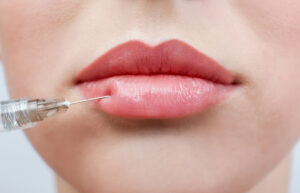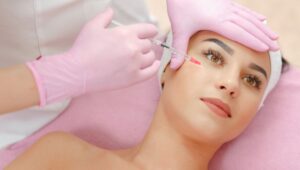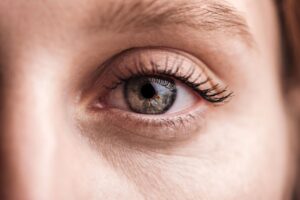The Vampire Facial – Everything You Need to Know about PRP
If you’re looking for a way to rejuvenate your skin and reduce the signs of aging you might be interested in the Vampire Facial – this cosmetic procedure has become popular in recent years and is known for its ability to improve the texture and appearance of the skin. In this article we’ll go over the basics of the vampire facial including how it works the benefits it offers and whether or not it’s right for you.
What is a Vampire Facial?
How does it work?
A vampire facial, also known as a platelet-rich plasma (PRP) facial, is a cosmetic treatment that involves using your own blood plasma and platelets to stimulate cell turnover and collagen production in your skin. During the treatment, a small amount of blood is drawn from your arm and placed in a centrifuge to separate the red blood cells from the plasma and platelets. The PRP is then injected into your face or applied topically after microneedling to stimulate your skin to heal and produce more elastin and collagen.
What are the benefits of having a Vampire Facial?
The benefits of a vampire facial include reduced fine lines and wrinkles, improved skin texture and complexion, and firmer, more youthful-looking skin. This is because the PRP contains growth factors that help to increase cell turnover and encourage the production of collagen and elastin, which are essential for healthy, youthful-looking skin. The treatment can also help with acne scarring and fine lines and wrinkles.
Is a Vampire Facial Suitable for All Skin Types?
While most people can safely receive a vampire facial, it may not be suitable for those with certain medical conditions or skin issues. It’s always best to consult with a board-certified dermatologist to determine if the treatment is right for you.
Is a Vampire Facial the same thing as a Vampire Facelift?
No, a Vampire Facial and a Vampire Facelift are not the same thing. A Vampire Facial, also known as a PRP facial or a Platelet-rich plasma facial, involves applying your own blood plasma on your face to stimulate collagen growth and improve skin texture and tone. On the other hand, a Vampire Facelift involves injecting hyaluronic acid filler into the face and then using PRP to rejuvenate the skin and improve overall appearance. Both treatments use PRP, but they are distinct in their approach and the results that they offer.
What is Platelet Rich Plasma (PRP)?
How is PRP obtained?
PRP is obtained by drawing blood from your arm and placing it in a centrifuge. The centrifuge separates the red blood cells from the plasma and platelets, which are then used in the vampire facial treatment.
What are the benefits of PRP in skin rejuvenation?
The benefits of PRP in skin rejuvenation include increased cell turnover, improved skin texture and tone, and reduction in the appearance of fine lines and wrinkles. This is because PRP contains growth factors that help to stimulate the production of collagen and elastin in the skin, which are essential for healthy, youthful-looking skin.
Does PRP Hurt?
Most people experience minimal discomfort during PRP treatment, as numbing cream can be applied to the skin beforehand. However, some people may experience minor bruising and redness after the procedure.
What is the Procedure for a Vampire Facial?
Does the Vampire Facial Involve Microneedling?
Yes, the vampire facial often involves microneedling with PRP. Microneedling is a non-invasive cosmetic procedure that involves using a needle to create tiny punctures in the skin. This stimulates the production of collagen and elastin, which can reduce the appearance of fine lines and wrinkles.
How is the PRP Applied During the Facial?
The PRP is usually applied to the skin after microneedling, either through injection or topically. The procedure is performed in a dermatologist’s office and usually takes about an hour to complete.
Is the Vampire Facial a Substitute for a Facelift?
No, the vampire facial is not a substitute for a facelift. While the treatment can improve the appearance of your skin, it cannot lift sagging skin or address more severe signs of aging. For those looking to address sagging skin and more severe signs of aging, a facelift or dermal filler may be a more appropriate treatment.
What are the Pros and Cons of Having a Vampire Facial?
Are there any Side Effects of a Vampire Facial?
The side effects of a vampire facial are typically minor and include redness, bruising, and swelling. However, these typically subside within a few days of the treatment.
What is the Downtime for a Vampire Facial?
Most people can resume normal activities immediately after a vampire facial, although you may experience some redness and swelling for a few days.
Can a Vampire Facial Help with Acne Scarring, Fine Lines, and Wrinkles?
Yes, a vampire facial is effective in treating acne scarring, fine lines, and wrinkles. The growth factors in the PRP help to stimulate collagen and elastin production, which can reduce the appearance of these skin issues.
*Information in this article is not medical advice and may not be factually accurate. It is intended for entertainment purposes only. Consult with a physician before attempting any tips in this blog post and to get the most up to date factual data about any procedure or treatment.













